| Umělec 2003/1 >> Alvaer Under an Ardent Sun | Просмотр всех номеров | ||||||||||||
|
|||||||||||||
Alvaer Under an Ardent SunUmělec 2003/101.01.2003 Jiří Ptáček | news | en cs |
|||||||||||||
|
If we are to believe that the Tranzit prize-winner was to be kept secret until a special announcement, then Norwegian artist Jesper Alvaer, who resides in the Czech Republic, is suspiciously clairvoyant. For on the very day the three-member committee officially crowned him, he gave an accompanying seminar for Tranzit. Not in the muggy auditorium, but directly in the environment he wished to investigate: the neighborhoods of Holešovice and Karlín in Prague.
This was an event closer in nature to the excursion tours of travel agencies, and we set off soon after lunch. Compared to traditional tour groups where during the usual rounds worn-out tourists peel away from the group, Alvaer’s seminar managed to attract a number of listeners. In the beginning there were maybe thirty and it peaked at about double that number. The sunny weather played right into the hands of Alvaer, and already during the intro visit to Display Gallery the mood was of a small relaxed party. Curator of the gallery David Kul-hánek did not oppress the crowd with long speeches, and let the visitors into the exhibition of the other Norwegian, Ole Jorgen Nesse. The moderator of the seminar then hurried everyone to the sight-seeing terrace of the Vltavska metro station, where whatever Alvaer had up his sleeve began to reveal itself. His intention was never to show us a list of locations (Holešovice, Karlín) under a single magnifying lens - rather he wished to diffuse our attention among disparate attitudes and interests. Ultimately he wasn’t creating a map, but a sketch to mark out the borders of an event that in the end was the half-day journey itself. What were his tools? On the terrace he had the social geographer Martin Ouředníček talk to the huddle of listeners. His explanation on the structural changes in the population of Holešovice, on the attractiveness of the living quarters there and the progressive desolation, was tasteful and welcoming but a clear change of mood. Immediately following his scientific discourse, an ornithologist continued with an engaging descant on the disappearing population of sparrows in Prague. The presence of this unlucky bird in the adjoining bushes was a main attraction. There was distinct pleasure as the Arabic kebab seller from the stand at Vltavska enriched the variety of the program. A question on the specifics of life in Holešovice surprisingly provoked him to talk about the cold weather in Bohemia. After another short talk by David Kulhánek, this time about communication and the architectonic junction at Vltavská, the mildly disoriented group walked through the atrium of functionalistic colossus of Česká spořitelna bank and headed to the buses that were supposed to take everyone to the opposite shore of the Vltava river. The organizers now confirmed that they had underestimated the number of attendees of the seminar. Instead of two buses only one arrived and not everyone could fit in. Many had to find their own way to the next stop under Čechův bridge. But Alvaer’s pilgrimage continued with no overt signs of anyone holding a grudge. The most attractive part of the seminar was highly anticipated - the boat ride. And the cruise ship Kotva would not disappoint. Once on-board the roof cast a welcome shadow, and the prices of the drinks were so high that every last participant must have felt like a ripped-off tourist. But if you refused the refreshment, the service staff went away and you were allowed to delight in a completely new view and you could relax from applying oneself to the ongoing lectures and instead converse in small groups at the tables. At mine the sculptor Stanislav Zámečník stood out. The official program continued without any interruptions. Behind the microphone appeared the grand- daughter of the sculptor and creator of the Stalin monument on Letná, Otakar Švec, along with Jiří Friedel from the Vltava river basin (who highlighted the history and technical parameters of a small water power plant) and the marketing director of the company Lighthouse. With the dry-as-dustness typical of marketing directors, he spoke of the construction of far-reaching office buildings stretching throughout the Holešovice port. He unprofessionally let himself be taken by surprise when he was asked whether their obscure project included a space for a gallery. It was made clear that under no circumstances would money for public welfare be taken into account. Reentry to the bus revealed a weak point in the organization of the project. People who had not participated in the previous part had come along for the boat ride. The driver refused to take the nearly two dozens people, and so they were left once again to travel on foot. Some never made it to the next stop. They missed a lot. Our arrival in the atrium of the Hilton was an unusual blast of middle-class rags and tags for the hotel. Considering that the interior walls of the Hilton look like the false facades of prefab buildings, the absurd encounter of the two social classes took on an almost existential dimension. An ironically entertained and resigned mood bloomed within the group. Even more so when we found out that we would be removed down the narrow halls of the nether regions of the hotel. Instead of the famed luxury of its suites, we investigated the white tiles of its laundries and the labyrinths of its back staircases. Even though it was impossible to ignore the creeping fatigue of the participants, we were encouraged by the fact that we had only one stop ahead of us: the unfinished Danube House. This arrogantly futuristic monument broke with its spiky keel the level of Karlín. Touchingly dominant, yet honestly not exceeding the standards of contemporary technological construction. Of course our host, Chief Executive of the investment firm Europolis Ibnvest, Petr Urbánek, was of a different opinion. Like a long-winded father figure he went into great detail about every technical and functional detail of his colossus. One consequence: even Golem can become a pet. Like a typical tourist group leaving the last destination, there arose among us an indefinable disgust, most certainly assisted by the heavy close of the forthcoming dusk. Finally, the bus. Finally, the end. Emotional tissues were vibrating and living out the contacts with all the numerous attitudes towards reality. After each one of these convincing presentations, this seemed the only possible reaction. And the rare few apprehended that Alvaer had spread his organizational jaws so far that he did not mind straying off towards mystification with the touchingly sincere granddaughter of Otakar Švec. In fact, he had been unable to find Švec’s heirs, and so he resorting to hiring an actress replacement. Nothing was completely clear, but we had filled half a day with unconventional playacting. We had become tourists in our own home- town. As a collective, we had allowed ourselves to be led by Alvaer’s ideas, and we had not even asked about the concept of the whole program. Someone else had taken care of us instead of us, and under no pressure we had perceived Alvaer’s gift of observation. For one afternoon we were freed from having to sit behind a computer, or make art. And for one afternoon it was possible to live like that.
01.01.2003
Рекомендуемые статьи
|
|||||||||||||
|
04.02.2020 10:17
Letošní 50. ročník Art Basel přilákal celkem 93 000 návštěvníků a sběratelů z 80 zemí světa. 290 prémiových galerií představilo umělecká díla od počátku 20. století až po současnost. Hlavní sektor přehlídky, tradičně v prvním patře výstavního prostoru, představil 232 předních galerií z celého světa nabízející umění nejvyšší kvality. Veletrh ukázal vzestupný trend prodeje prostřednictvím galerií jak soukromým sbírkám, tak i institucím. Kromě hlavního veletrhu stály za návštěvu i ty přidružené: Volta, Liste a Photo Basel, k tomu doprovodné programy a výstavy v místních institucích, které kvalitou daleko přesahují hranice města tj. Kunsthalle Basel, Kunstmuseum, Tinguely muzeum nebo Fondation Beyeler.
|







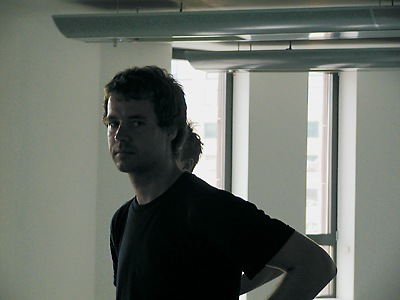














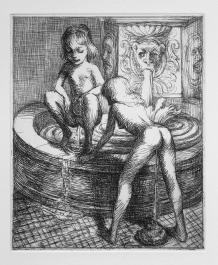





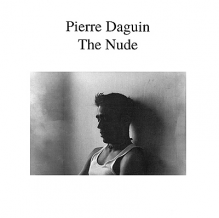
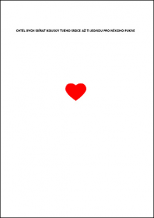
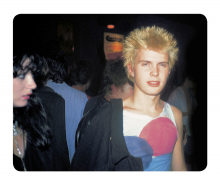


 We Are Rising National Gallery For You! Go to Kyjov by Krásná Lípa no.37.
We Are Rising National Gallery For You! Go to Kyjov by Krásná Lípa no.37.
Комментарии
Статья не была прокомментированаДобавить новый комментарий